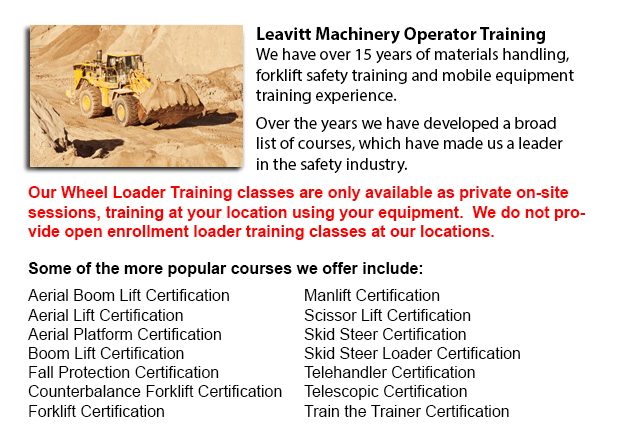
Lift trucks are accessible in a variety of other models that have various load capacities. The majority of average lift trucks used inside warehouse environment have load capacities of one to five tons. Larger scale models are utilized for heavier loads, like loading shipping containers, could have up to 50 tons lift capacity.
The operator could make use of a control in order to raise and lower the forks, which can also be referred to as "blades or tines". The operator of the lift truck can tilt the mast in order to compensate for a heavy loads tendency to angle the blades downward. Tilt provides an ability to function on bumpy ground as well. There are yearly competitions meant for skillful forklift operators to contend in timed challenges and obstacle courses at local lift truck rodeo events.
General utilization
All lift trucks are rated for safety. There is a particular load maximum and a specified forward center of gravity. This very important information is provided by the manufacturer and located on the nameplate. It is essential cargo do not go beyond these specifications. It is against the law in numerous jurisdictions to tamper with or remove the nameplate without obtaining consent from the lift truck manufacturer.
Most forklifts have rear-wheel steering to be able to increase maneuverability within tight cornering conditions and confined areas. This particular type of steering varies from a drivers' first experience together with other motor vehicles. As there is no caster action while steering, it is no necessary to use steering force so as to maintain a continuous rate of turn.
One more unique characteristic common with forklift operation is unsteadiness. A constant change in center of gravity happens between the load and the forklift and they have to be considered a unit during utilization. A lift truck with a raised load has centrifugal and gravitational forces which may converge to bring about a disastrous tipping accident. To be able to prevent this from happening, a forklift must never negotiate a turn at speed with its load elevated.
Forklifts are carefully made with a particular load limit intended for the blades with the limit lessening with undercutting of the load. This means that the load does not butt against the fork "L" and would decrease with the rise of the tine. Normally, a loading plate to consult for loading reference is placed on the forklift. It is unsafe to utilize a forklift as a personnel lift without first fitting it with certain safety devices such as a "cherry picker" or "cage."
Forklift use in distribution centers and warehouses
Forklifts are an important part of warehouses and distribution centers. It is essential that the work surroundings they are placed in is designed to accommodate their efficient and safe movement. With Drive-In/Drive-Thru Racking, a forklift must travel within a storage bay that is many pallet positions deep to set down or obtain a pallet. Operators are usually guided into the bay through rails on the floor and the pallet is positioned on cantilevered arms or rails. These tight manoeuvres need well-trained operators to do the task safely and efficiently. Since each pallet requires the truck to enter the storage structure, damage done here is more frequent than with different kinds of storage. When designing a drive-in system, considering the measurements of the fork truck, as well as overall width and mast width, have to be well thought out in order to be certain all aspects of a safe and effective storage facility.
-
Toronto Wheel Loader Training
Toronto Wheel Loader Training - Normally, the different kinds of heavy equipment training are classed into 2 categories of machinery: those that have rubber tires and tracked vehicles. Tracked vehicles consist of items like for example excavators, cr... More -
Toronto Heavy Equipment Operator Training
Toronto Heavy Equipment Operator Training - Heavy equipment operator training facilities that provide good standards in the business, providing field performance tasks and added machinery training are really sought after training features. Students a... More -
Toronto Manlift Operator Certification
Toronto Manlift Operator Certification - We provide an aerial lift and scissor platform certification and training to empower the trainee with the general understanding and knowledge of the safe and efficient use of "Power Operated Mobile Work Platfo... More -
Toronto Aerial Boom Lift Ticket
Toronto Aerial Boom Lift Ticket - Aerial lifts can be utilized to accomplish a lot of unique duties done in hard to reach aerial spaces. Some of the odd jobs associated with this type of jack include performing regular preservation on structures with... More -
Toronto Heavy Equipment License
Toronto Heavy Equipment License - Obtaining a heavy equipment license is mandatory in order to operate these big industrial machinery. Certification could be acquired through a vocational school or private training. The license would enable the drive... More -
Skid Steer Loader Training in Toronto
A skid-steer loader is an engine powered equipment which consists of a small and rigid frame. It is outfitted together with lift arms that are utilized to connect to a large variety of labor saving tools and attachments. Typically, skid-steer loaders... More -
Toronto Aerial Lift Certification
Toronto Aerial Lift Certification - Aerial Lift Certification is for individuals who requires an in-depth understanding of aerial lift safety. Inspectors and operators, supervisors, maintenance workers and construction craftsmen should perform a cert... More -
Toronto Boom Lift Training
Toronto Boom Lift Training - Elevated work platforms, also called aerial platforms, allow workers to carry out tasks at heights which would otherwise be not reachable. There are different kinds of lifts intended for various site conditions and applic... More

Forklift Certification Toronto
TOLL FREE: 1-888-254-6157
Toronto, Ontario
forkliftcertificationtoronto.com
Email Us
About Us


